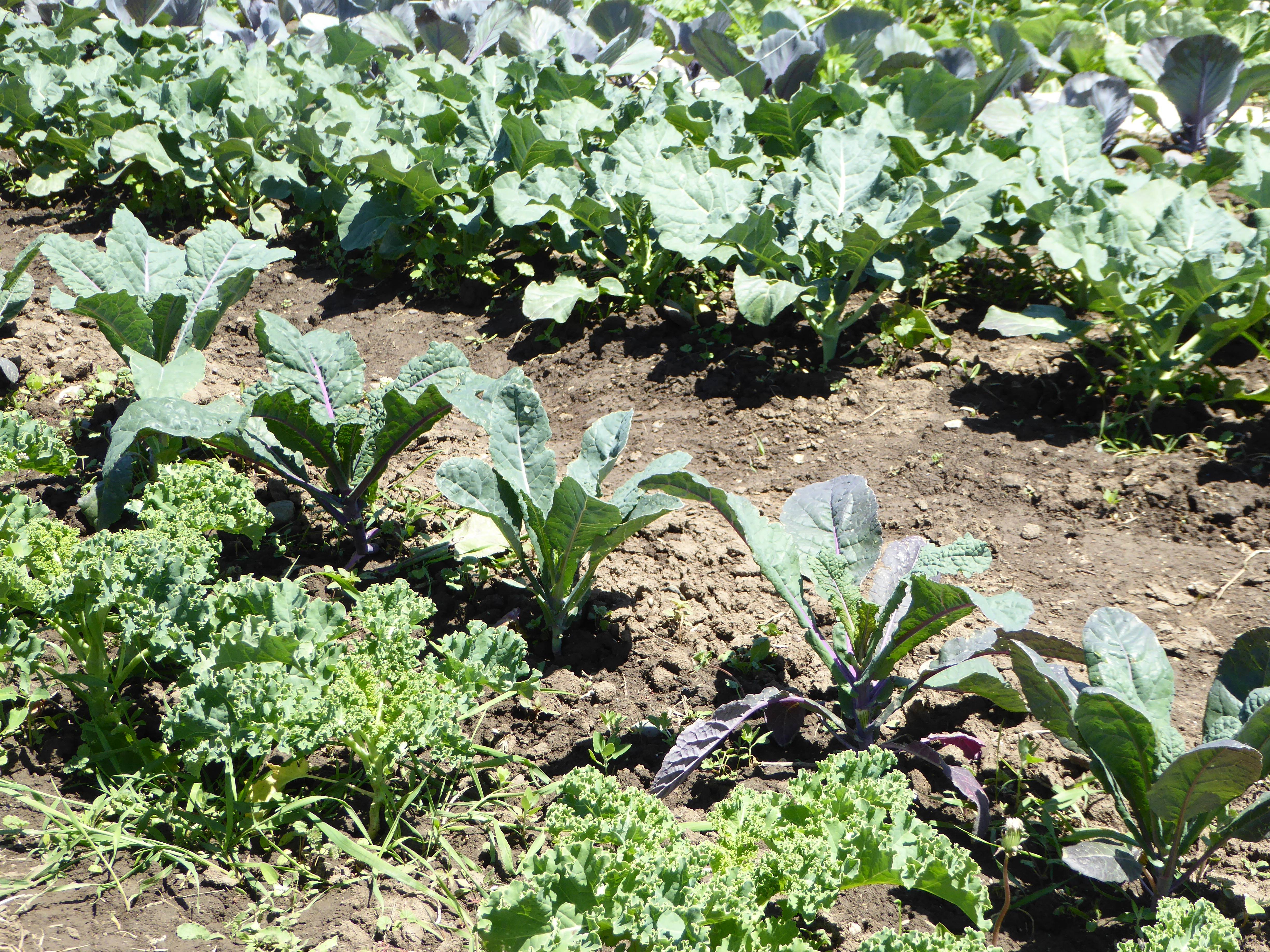Vegetables and Home Gardening

Soil nutrients and organic matter are important for a healthy garden. Effectively managing a garden's nutrients helps garden plants thrive, uses resources like fertilizers and amendments more efficiently, and protects ground and surface water. If plants aren’t thriving, soil nutrients could be lacking, out of balance, or even too high. Adding fertilizer, compost, or manure may not solve the problem, and may actually make the problem worse if nutrients are in excess.
Soil testing is an important component of soil nutrient management, allowing gardeners to determine the actual nutrient levels present in their soil. The resources below guide you through the soil sampling process and explain the roles of organic matter, soil texture, pH, nutrient properties, fertilizers, and amendments in building a healthy garden.
If you have any questions about soil nutrients contact Dr. Clain Jones. If you think plant growth issues may be related to pesticide (e.g., herbicide residual in compost), please contact Noelle Orloff (406-994-6297) or Dr. Tim Seipel (406-994-4783) for assistance.
MSU Extension Resources
Market Vegetable Farms: MSU Extension bulletins
Feeding the Vegetable Garden Soil Scoop
Soil Testing: Test Kits vs Laboratory Analysis Soil Scoop
Soil Testing: Getting a Good Sample Soil Scoop
Soil Testing: Once You Have the Sample Soil Scoop
Home Garden Soil Testing & Fertilizer Guidelines MSU MontGuide
Home Garden Soil Testing and Fertilizer Guidelines MSU Lives and Landscapes
More compost may not be what your garden soil needs MSU Press Release
Building Healthy Garden Soils, a recording of Clain's April 2025 presentation to Valley County gardeners.
Home Composting MSU MontGuide
Minimizing Pesticide Contaminated Soil Around the Home and Garden MSU MontGuide
Comparing soil test kits with standard lab-based soil tests Crops & Soils Magazine, March 2019
Gardening video series (6) by MSU Extension Agent Patrick Mangan
Other Resources
- Washington State University Organic Farming Systems and Nutrient Management - includes information for east of the Cascades
- Midwest Vegetable Production Guide provides information that might be useful for high tunnel or greenhouse production in our climate
- Oregon State University's Plant-Available N Calculator - estimates N from cover crops and other soil amendments within a growing season
- Interpreting Compost Analyses 2018 Oregon State University Extension
-
Sustainable Manure and Compost Application: Garden and Micro Farm Guidelines – Utah State University Extension https://digitalcommons.usu.edu/extension_curall/2047/. With a link to a manure worksheet/calculator
Soil Sampling & Testing
- Visit our Soil Sampling website for more information.
- Best done in early spring.
- Remove mulch or thatch before taking the sample (0-6 inches deep). Use soil sampling auger (borrow from local Extension office) or bulb planter. Be sure tools used to sample aren't contaminated by storage near fertilizers, and wash them between sampling different gardens.
- Collect and mix 10 samples for each 1000 sq. feet of area of interest (e.g., lawn separate from vegetable garden).
- Take a pint sized subsample of the mixed samples.
- Keep below 40°F and overnight ship, or immediately dry at 110-120°F, or freeze for drying at 110-120°F later.
- Send to a soil testing lab from this list and request pH, organic matter, electrical conductivity (EC = salts), nitrogen (N), phosphorus (specify Olsen P method), and potassium (K). You can add texture (or test texture at home using the jar test), and micronutrients if you suspect iron, or other deficiency or excess. Sulfur (S) soil tests are not a good indication of sulfur availability for plants, i.e. don't do soil test for sulfur.
|
Material
|
N
|
P2O5
|
K2O
|
|---|---|---|---|
|
Manure compost1
|
40
|
15
|
40
|
|
Yard compost2
|
58
|
8
|
12
|
|
Green/food compost3
|
15
|
9
|
30
|
|
Dead leaves4
|
40
|
9
|
18
|
|
Dead pine needles
|
18
|
4.8
|
1.2
|
|
Alfalfa pellets
|
120
|
40
|
80
|
|
Annual vegetable harvest lb/1000 sq. ft5
|
2.3
|
0.5
|
2.7
|
|
Sources: 1. MSU, 2. Maryland Urban compost LeafGro and SmartLeaf, 3. Waste Resources Action Programme of Wales 4. Heckman and Kluchinski 1996, 5. Univ. Mass., Michigan State, Oregon State, Morris et al. 2007 |
|||
|
Material
|
N
|
P2O5
|
K2O
|
|---|---|---|---|
|
Manure compost
|
0.01
|
0.0037
|
0.01
|
|
Yard compost
|
0.0145
|
0.002
|
0.003
|
|
Green/food compost
|
0.0037
|
0.002
|
0.0075
|
|
Dead leaves
|
0.01
|
0.0023
|
0.0046
|
|
Dead pine needles
|
0.0045
|
0.0012
|
0.0003
|
|
Alfalfa pellets
|
3
|
1
|
2
|
|
Bone meal
|
3.5
|
17
|
0
|
|
Blood meal
|
12
|
0
|
0
|
|
Brewery grain (wet)
|
0.9
|
0.5
|
0.05
|
|
Canola meal
|
6
|
1
|
1
|
|
Wood ash (unleached)
|
0
|
1.25
|
2
|
|
Coffee grounds (dry)
|
2
|
0.36
|
0.67
|
|
Urea (chemical fertilizer)
|
46
|
0
|
0
|
|
Worm castings
|
highly variable and its not about NPK
|
||
